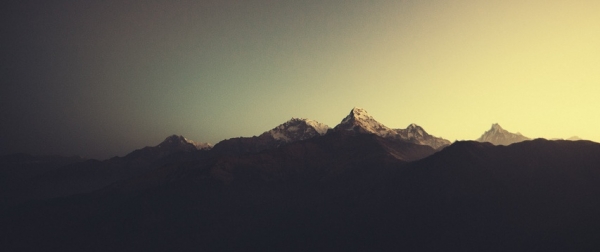Is climate change causing more disasters on mountains?

By Tan Shin Bin for NLB
April 2014, an avalanche on the world’s highest peak, Mount Everest, claimed the lives of 16 Sherpa guides and wounded several others, in the deadliest accident in modern mountaineering. Later that year, disaster struck the Himalayas again, as an unseasonal snowstorm hit a popular trekking route in Nepal. The snowstorm resulted in at least 29 deaths and the disappearance of more than 80 people. Over in Sri Lanka, a massive mudslide on a mountain slope claimed the lives of 38 people that same year.
There has been much discussion and debate over the role climate change has in creating extreme and destructive weather events, even in Singapore where weather variations are comparatively mild. I was thus curious to find out how climate change affected mountains, and if it could have been a cause of the spate of recent disasters on mountain slopes.
From my reading, I discovered that mountains—unassailable as they may seem—are actually immensely sensitive to climate change, compared to other terrestrial habitats. According to materials from a 2014 UNESCO exhibition, the effects of climate change in mountain regions include changes in temperature and precipitation and greater unpredictability in weather. Some other consequences are a loss of snow and glacier resources, and increased changes in river and stream flows. Alarmingly, experts expect that these shifts in mountain conditions as a result of climate change are likely to cause more frequent extreme weather events, fires, droughts and floods.
Another report by the University of Bern, Switzerland highlighted that while climate change cannot account for all types of disasters in mountain regions, it can cause changes in precipitation that could destabilise valley slopes. Warmer temperatures, which are also associated with climate change, could similarly wreak havoc by reducing snow cover and melting glaciers and permafrost. This may in turn trigger the release of loose rock and soil, leading to dangerous rock falls and mud flows. In mountain areas that are already sensitive to fire risk, longer periods of higher temperatures could create sustained fire hazards. All these pose significant threats to human life.
Already, academics, climbers and locals familiar with mountainous regions have sounded the alarm about potential disasters if climate change continues to create drastic shifts in the weather conditions in such areas. While there appear to be signs of progress, as nations move towards a global accord to fight climate change and cut carbon emissions, these efforts have been slow in coalescing. I still worry, whenever I pick up a newspaper, that the headline will be about climate change resulting in yet another mountain disaster.

Facebook comments